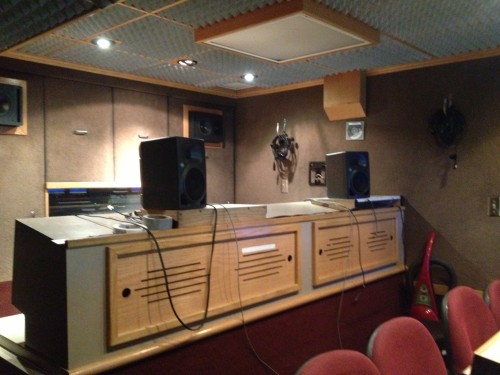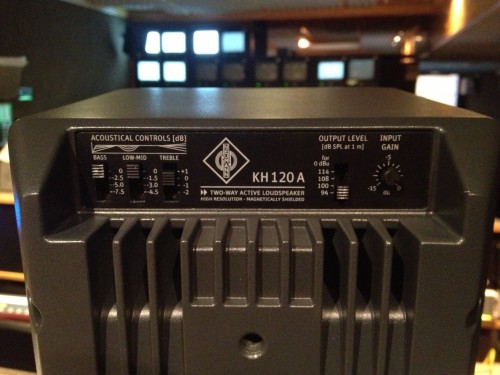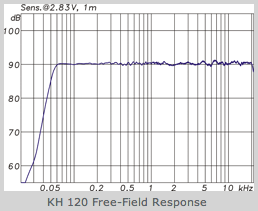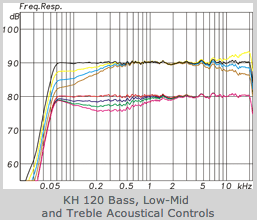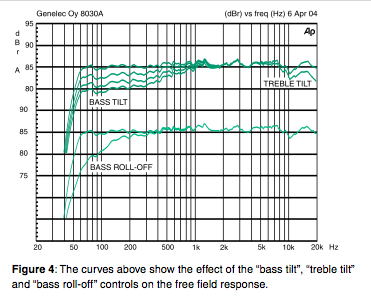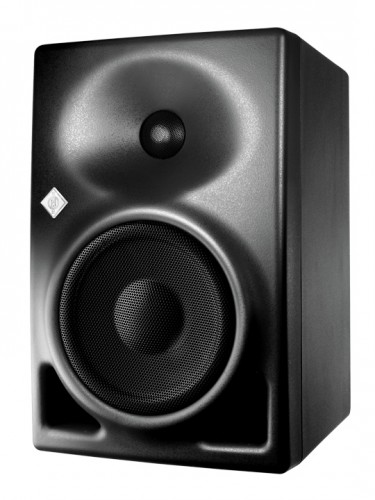
Since most mobile trucks use Genelec speakers for monitoring in audio, I thought it would be fun to set them up side by side and have a shoot-out of sorts. I have seen many different speakers used as reference monitors in mobile trucks; from Yamaha, to Tannoy, even some Mackies but by far the most I’ve seen have been Genelec 8000 series. Most of our trucks at MIRA have the 8030A monitors in the audio control rooms.
Luckily for me, we had a pair of 8030s sitting in the warehouse waiting to be installed in a unit we are converting so I took them and the Neumanns up into one of the trucks and set up the shoot-out. A mobile truck might not necessarily be one of the best places to mix audio from a purist’s perspective but alas we are forced to make do, which is why it is so important to have speakers that are clean and smooth, with great depth of field and the ability to adapt to whatever environment they are placed in.
Most near-field reference monitors these days come with some variation of tone controls on the back, allowing for a bit of customization, according to the room in which they are placed. Mobile trucks are often heavily dampened, with carpet on the floor and walls, and acoustical foam in the ceiling creating a very dead, flat sound. Almost like a hyperbaric chamber of sound! This works out perfectly though for the application. If it wasn’t dampened then all the different conversations would mash together and no one would be able to understand each other. From an audio perspective, this allows you the best opportunity to hear exactly what your mix sounds like tonally, and spatially.
Now to the best part.
Since audio rooms in trucks tend to be small and tightly packed, I thought it would be easier to set up in the main production area, which also gave me the ability to listen at several different distances. I made a point not to look at any material regarding either speaker set until after I had a chance to listen because I didn’t want that information to change what I heard. In fact, I was hoping to be able to later SEE what I heard when looking at the response charts and see if they line up.
The Neumann KH-120A has several choices on the back for tone adjustment, including the ability to cut the low-mid frequencies, specifically around the 250-300 mark. This is something that I see as somewhat unique as most monitors only have adjustments for the treble and bass roll-off.
It also has a somewhat peculiar switch labeled “Output Level” that is separate from the input gain control. I will be curious to read more about this in the coming days but from what I can tell, it acts similar to the “DialNorm” used by broadcasters to set a reference level for content transmitted to the consumer. The television, or audio receiver on the other end then interprets this encoded data and uses it to adjust the level and dynamic range setting; another thing most people, including me, didn’t know existed until a few months ago.
Once setup, I listened to a variety of music including both male and female vocalists, guitar driven, piano driven, acoustic, bluegrass, country, and straight pop. I even threw in some Tom Petty and Journey just for kicks.
I found that the Neumanns had a very broad sound stage and were very smooth across the board. They were a little bass heavy, which could have been a result of the truck, but still tight and punchy, not flabby. I played around with the bass and low-mid settings to compensate and found them to be nice and gentle adjustments, not like other monitors I have used that use a meat-cleaver effect. Also, the high end was superbly crisp without being harsh.
One thing I don’t think a lot of people listen for in speakers, small or large, is the depth of field. I, myself, didn’t start listening for this until several years ago when my friend Ray was listening to some speakers he was considering for an install in a theatre. Contrary to what you might believe by listening to most music on the radio today, not everything has to be a super-compressed, in-your-face smack attack of sound. You should be able to distinguish details in the music including the trailings of a piano as the sustain pedal is held. Subtle reverb trails and spatial positioning are hallmarks of well mixed music. These are more clearly heard in more acoustical artists such as Alison Krauss and Norah Jones, to name just a few.
When I compared the Genelec 8030s, the difference was immediately clear. While the Neumanns were nice and smooth from top to bottom, the Genelecs were all kinds of funky. To start with the bass wasn’t nearly as punchy, and there was a noticeable boost in the high-mids. They also got harsh above 5 kHz. I listened to the same musical selection and, despite playing endlessly with the acoustic settings, could not seem to get a truly smooth sound. I just wish there had been an adjustment for that bump in the mids. Also, while the Genelecs had a great stereo field, they lacked the same depth and overall encompassing feeling of the Neumanns.
I was truly blown away by the Neumann KH-120A Near-Field Monitors to say the least. It reminds me of the first time I heard my Event ASP-8s. Nothing else I listened to that day was the same. And at $1,500 a pair, they are in the same ballpark as the Genelec 8030s too. And while I was listening to these in a different setting than most of you probably will, I believe that what I heard today in the truck will translate to your room as well.
Here are links to more information about the speakers:

